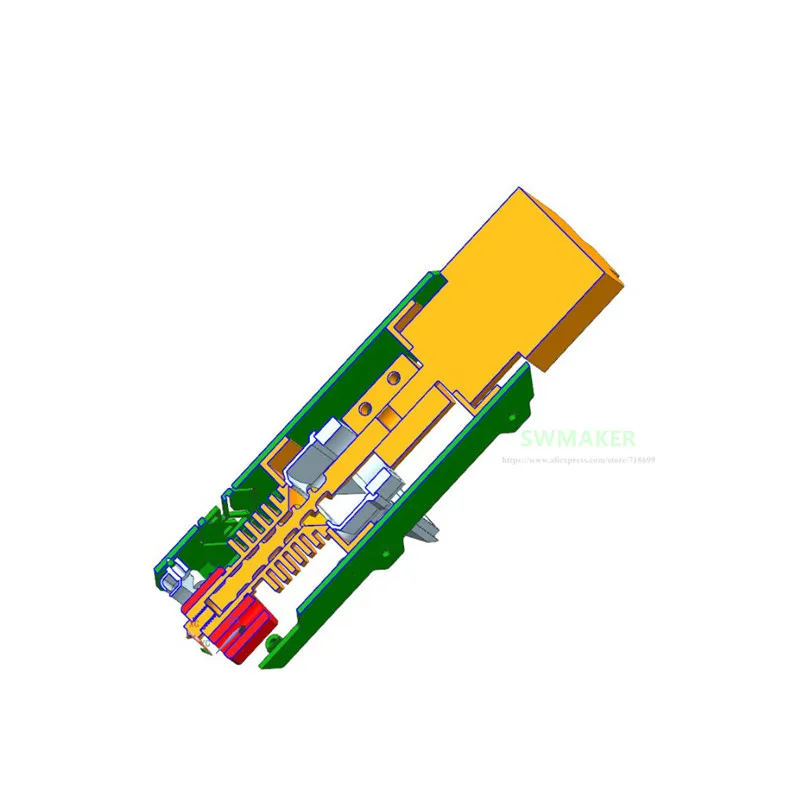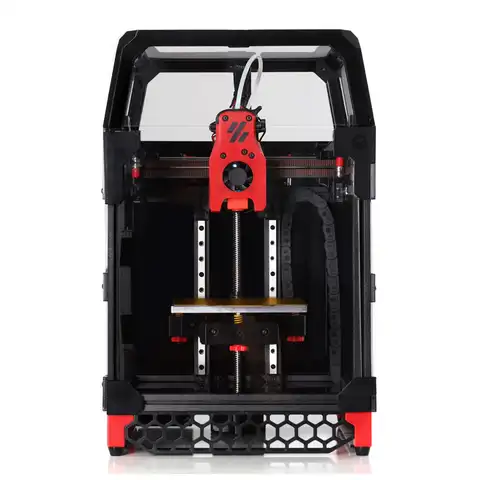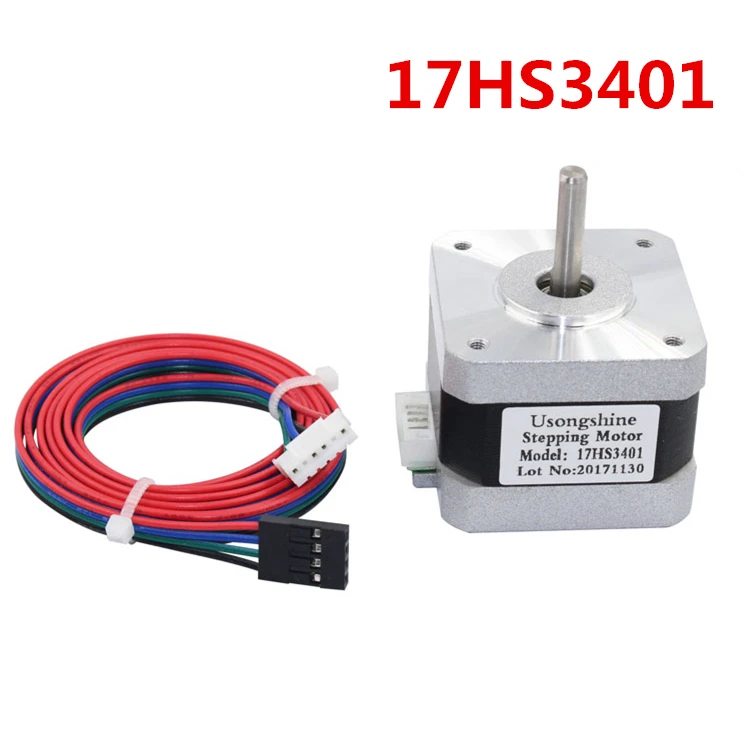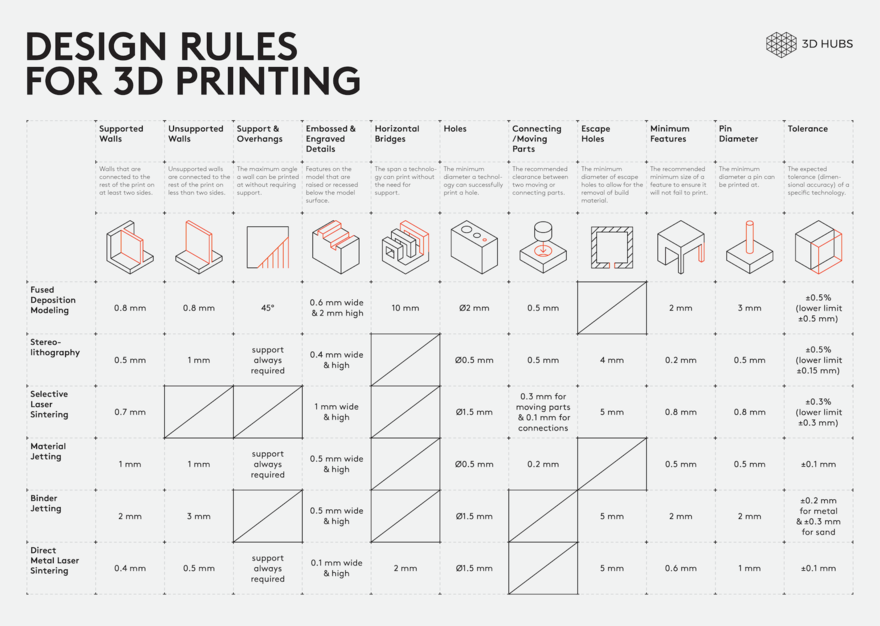3D scanner resolution
What you need to know
Introduction
Generally, accuracy means how close a measurement is to its true value. In 3D scanning, accuracy generally refers to single scan accuracy, but then there’s also volumetric accuracy.
When it comes to resolution, whose general definition is how sharply an image can be displayed, there can also be two values in 3D scanning. 3D scanner OEMs generally refer to mesh resolution– i.e., the distance between points within a point cloud (3D mesh)– when specifying resolution. But, some also specify measurement resolution.
All of these terms can be a bit confusing, and 3D scanning is already a complex enough technology. Let’s go over the basics!
3D scanning accuracy
What is accuracy?
The general definition of accuracy is how close the measurement is to its true or tolerable value. It is often confused with precision, which is how close different measurements (of the same target) are to each other. The simple graphic below illustrates the difference between accuracy and precision:
In 3D scanning, accuracy is how close the scanner’s measurements are to the object’s true size. If you measure a cube with an industrial caliper and obtain a width of 200mm, but your scanner captures the cube as 205mm-wide, then it is quite off.
Two types of accuracy specifications exist in 3D capture: single scan accuracy and volumetric accuracy.
Single scan accuracy vs volumetric accuracy
In spec sheets, accuracy often means single scan accuracy. It is the accuracy of one image capture.
Example: 0.05mm accuracy.
Most 3D scanner OEMs also specify volumetric accuracy. It is the accuracy of several captures, and this global accuracy diminishes the bigger the scanned part is.
Example: 0.05mm + 0.15mm/m.
Following our example, if your part measures 2 meters long, the accuracy of your scanner will be 0.05 + (0.15*2) = 0.035mm. That’s quite a difference from the original, single scan accuracy! Volumetric accuracy is thus more important to consider than single scan accuracy, especially if you are going to 3D scan large objects (e.g., cars).
That said, some 3D scanners with integrated photogrammetry modules can build up a sort of 3D skeleton of the object (with adhesive markers) before filling it in with the rest. Markers are precise reference points for 3D scanners, like a connect-the-dots drawing. By using a photogrammetry-sourced “skeleton”, your data is bound to be more accurate.
Note: Photogrammetry is a 3D scanning technology that involves taking multiple photographs of an object from different angles in order to calculate its shape and size.
A part fitted with markers. Source: Aniwaa (SIMSCAN review)
Source: Aniwaa (SIMSCAN review)How accurate are these specifications?
Manufacturers indicate specifications which are maximums that were obtained in ideal conditions. If the manufacturer recorded an accuracy of 0.05mm in its lab, it doesn’t mean you will be able to achieve the same accuracy in-house.
A scanner’s accuracy can depend on a number of factors:
- Temperature (a 3D scanner will perform differently at 40°C than it will at 20°C)
- Calibration (how well did you calibrate your 3D scanner? Do you calibrate it regularly?)
- The person performing the scan (though there is less room for error with today’s and tomorrow’s sensors, and more intuitive software)
On another, important note, 3D scanner manufacturers don’t all follow the same standards to measure their scanners’ accuracy. If high accuracy is of utmost importance for your applications, look for brands that have VDI/VDE and/or ISO certifications, for example.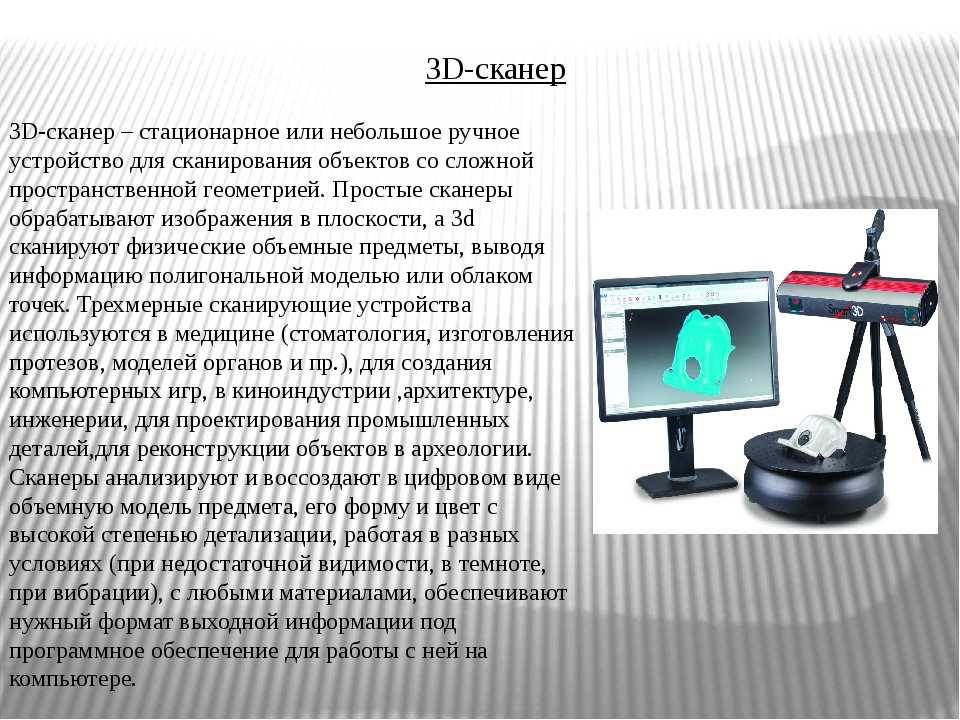
3D scanner resolution
What is resolution?
Resolution can mean many different things depending on what you are talking about (photography, filmography, printing, …), but it has the same fundamental meaning. It is a technical computer science term that characterizes “how well the reality was captured”.
With screens, for example, the resolution is linked to the number of pixels available to recreate an image. The more pixels, the better the resolution and the image quality (the cleaner and crisper your image will seem). We can see this clearly with the circle example below:
Pixel density affects the visual quality of an image. Source: Research Gate (Ivan Terol-Villalobos)In 3D scanning, there is one main type of resolution: the resolution of your 3D mesh, a.k.a. “mesh resolution”. But some manufacturers also specify “measurement resolution”.
Mesh resolution
Most often, “resolution” or “3D resolution” in spec sheets refers to the resolution of the resulting 3D mesh. It is mainly measured in point-to-point distance– ie., the distance between two 3D points in a dot cloud– as it is the easiest to comprehend. The closer your mesh’s points are together, the better it will look. Point-to-point distance is sometimes called “spacial distance between points” or “point distance”.
It is mainly measured in point-to-point distance– ie., the distance between two 3D points in a dot cloud– as it is the easiest to comprehend. The closer your mesh’s points are together, the better it will look. Point-to-point distance is sometimes called “spacial distance between points” or “point distance”.
Resolution can also be measured in PPS (points per scan). The more points your mesh includes, the smoother, more detailed it will look. This can be compared to 2D print quality, where the more PPI (points per inch) your file contains, the sharper your print.
Keep in mind that a higher mesh resolution means longer loading times and heavier files. If you don’t really need an extremely high definition, then there’s no use in putting strain on your RAM/GPU and weighing down your hard drive.
Note: In any case, you will likely need to invest in a high-end, gaming-quality PC in order to run 3D scanning software and load the enormous amount of captured data. Some of the computers we’ve worked with for high-end scanners cost over $5,000.
Some of the computers we’ve worked with for high-end scanners cost over $5,000.
Measurement resolution
The measurement resolution translates to how many points the sensor is capable of capturing in a given area. The more points per unit of surface, the better.
But, in the end, what really matters is the mesh resolution that can be obtained and used in the software after computation. In some cases, the software calculates an average of several measurement points to generate a single mesh point (a vertex).
Note that the requirements for mesh resolution are relative and not absolute: on a sharp edge, you need a good resolution; on a flat surface, only a few points are necessary. Some 3D scanning software suites optimize meshes accordingly to avoid stocking heavy, unusable data (and choking your PC) for nothing.
Note: As a metaphor, let’s take the human body and its sensory receptors. We have thousands of receptors at the tip of our fingers, which we use to touch and interact with almost everything. Our backs, however, have very few sensory receptors, as we don’t really use our backs to feel things.
We have thousands of receptors at the tip of our fingers, which we use to touch and interact with almost everything. Our backs, however, have very few sensory receptors, as we don’t really use our backs to feel things.
Conclusion
Many different terms are thrown around manufacturer websites and spec sheets. What really matters is volumetric accuracy and mesh resolution, and how well they answer your specific needs.
Furthermore, while accuracy and resolution specs are useful to easily and quickly compare one 3D scanner to another, they shouldn’t be deciding factors on their own. You should also consider a brand’s certifications, history, software, customer service, and more.
Feel free to reach out if you’re having trouble deciding on a 3D scanner or unsure of what you’ll actually need for your use case (and budget!).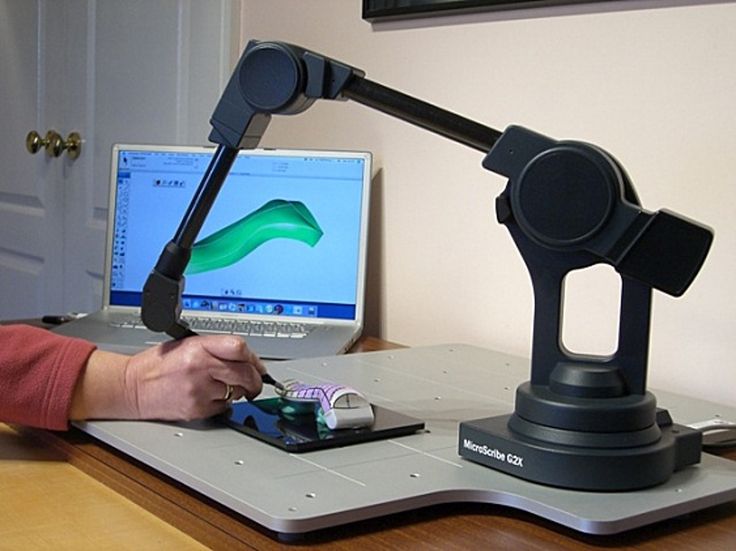
Things to know before buying a 3D scanner: accuracy, speed, resolution
To make sure that you have all the necessary information prior to committing to a purchase, we have created the following short guide to help you make the right decision. It will address those all-important questions which you need to ask yourself, such as:
- What will I be 3D scanning?
- What technical specifications do I need to take into consideration?
- What is the difference between a handheld and a stationary 3D scanner?
- What is the price range for a professional 3D scanner?
1. Accuracy. How accurate is 3D scanning?
The accuracy of a portable 3D scanner normally ranges between 0.01 mm and 0.1 mm. But hey, what does it actually mean? Let’s say you’ve made a 3D model of your hand. Zoom in on your finger pads and you’ll clearly see the ridges. Fingers aside, how important is accurate 3D scanning for professional applications?
Accuracy, in fact, refers to how close to the actual object we have come in creating its virtual copy.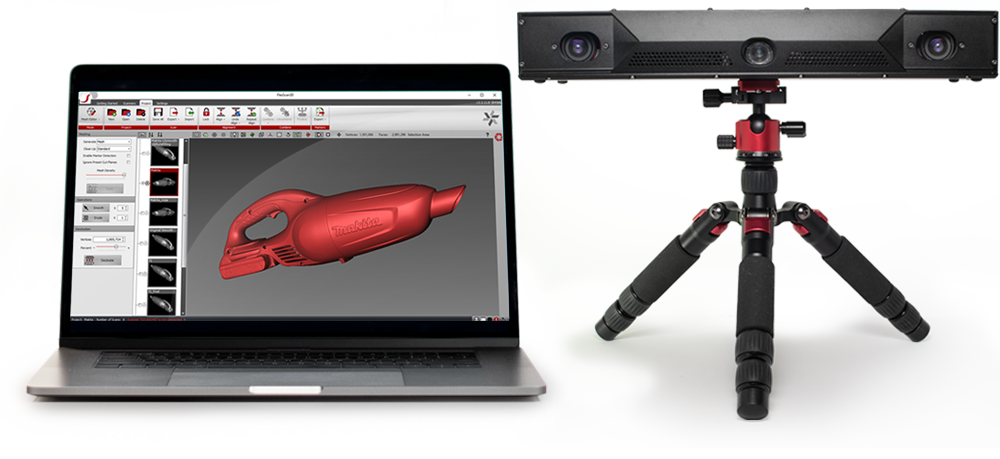 How close are the dimensions of the 3D model to those of the object?
How close are the dimensions of the 3D model to those of the object?
Left: Actual size of the impeller cylinder measured with a micrometer — 29.80 mm.
Right: 3D model — size 29.85 mm
Accuracy is extremely important when key decisions need to be made based on the 3D scan data. This is especially true for industrial applications when precision is of the utmost significance.
To get the best accuracy, the scanner needs to be calibrated. All 3D scanners are initially factory calibrated, where the manufacturer ensures the best possible accuracy of the device. For some 3D scanners, onsite calibration is also possible. This is where the accuracy settings of the 3D scanner can be manually adjusted by the customer to meet the manufacturers’ optimal standards any time after the purchase to better suit his or her needs.
Highly-accurate handheld 3D scanners are great for industrial applications
Key point
Only professional 3D scanners are able to provide high accuracy and though they are pricier than scanners with lower specs, they are almost always worth the investment.
Manufacturers of 3D scanners will always state the accuracy in the specs of their device. The accuracy you require depends on the task at hand, but ultimately the choice is yours.
2. Resolution
Though accuracy is one of the key aspects to consider when choosing a 3D scanner, it is important to explore other factors, such as the resolution of the scanning device.
While accuracy is the measurement of the device’s degree of absolute correctness, resolution is the least possible distance between any two given points within a 3D model and is usually expressed by millimeters, or microns. This means, if you are looking to have an extremely detailed 3D model, you would use a high-resolution 3D scanner to capture the object. This is especially important for applications in quality control, reverse-engineering, animation and VR, heritage preservation, forensics, jewelry and many others.
The higher the resolution, the more detailed your 3D model will look.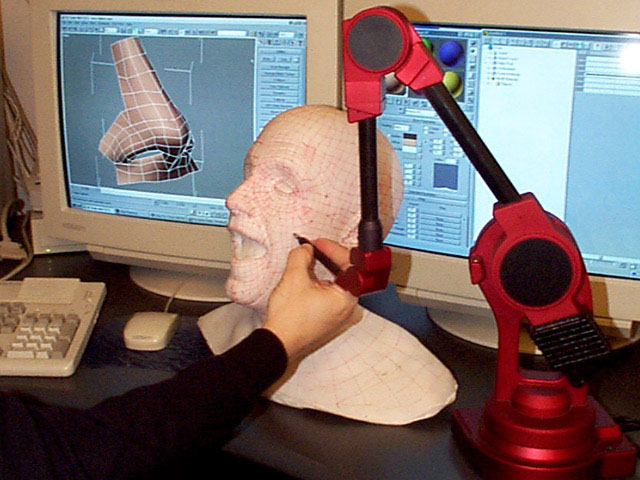
Left: resolution 0.15 mm, Right: resolution 0.3 mm
Sometimes, however, the user will opt for a lower resolution data. The higher the resolution, the heavier the model and the more time it will take to process. This might be a setback for users with less powerful computers, as well as those planning to 3D print the final model. A 3D printer will take much longer to produce a higher resolution model with all of its intricate details. So if processing time and printing speed matters, this is definitely something to keep in mind. Additionally, some 3D printers may not be able to reproduce high-resolution levels.
Depending on the application, users will choose the resolution settings accordingly. If you need your 3D model to be as detailed as possible, go for a 3D scanner that is able to safely and easily capture even the smallest of features.
Opt for a portable, lightweight 3D scanner. Handheld 3D scanners are easy to operate and rotate around the object being scanned. Select advanced models are able to 3D scan objects with a resolution of up to 0.1mm.
Select advanced models are able to 3D scan objects with a resolution of up to 0.1mm.
3. Speed
Time is money and that’s why it is also very important to consider the speed of a 3D scanner.
When we are talking about speed, we refer to how fast a 3D scanner can capture any given object. The way the speed is measured differs depending on the type of technology the device is using. For example, the speed of a structured light 3D scanner is calculated by the number of frames and the number of points captured per second. Some advanced white light 3D scanners only need one second to make 16 frames and capture 2 million points of the object.
A top-of-the-range handheld scanner with VCSEL technology is capable of going as fast as 80 frames per second and capture up to 4 million points in a flash.
A high-end VCSEL 3D scanner with an inbuilt touch screen, battery and WiFI data transfer
The speed of a LIDAR solution is calculated by the millions of points it is able to capture in a single second. A good quality stationary laser scanner would be able to scan at a speed of about 200,000 points per second. These are reference numbers and may vary depending on the scanner, object and scanning distance.
A good quality stationary laser scanner would be able to scan at a speed of about 200,000 points per second. These are reference numbers and may vary depending on the scanner, object and scanning distance.
A faster 3D scanner allows users to capture any object quickly, eliminating unnecessary costs and boosting productivity. This is especially important for large and costly projects on a tight schedule.
4. Ease of use
Ease of use is another important factor to consider when choosing a 3D scanner. To get the best possible results and maximize the output, it is vital to know how to utilize the device’s full potential.
One of the key questions to consider here: «How often will you be using your 3D scanner?»
If you will be doing a lot of 3D scanning or capturing large amounts of data, remember that a professional device with quick data capture abilities will save you time and money in the long run, as well boost your productivity.
Mid and upper-range 3D scanners are usually quite easy and intuitive to use. Although you might be tempted to go with cheaper versions, consider the additional time, training and frustration those might incur.
Although you might be tempted to go with cheaper versions, consider the additional time, training and frustration those might incur.
Key point
Although you might be tempted to go with cheaper versions, consider the additional time, training and frustration those might incur.
The fast frame rate and advanced tracking algorithms in professional solutions make scanning a lot swifter and easier. When considering the post-processing stage, don’t forget that the software plays an important part too. The software that goes with professional scanners is likely to be much more powerful and generally contains many automated features, without compromising on accuracy. As a result, the software is more user-friendly, fast and easy to learn.
5. Part size
Before selecting a 3D scanner, it is important to consider what exactly you will be capturing:
- What is the size of the object or objects you will be capturing?
- Will you be scanning variously sized objects? Or perhaps you are planning to automate your workflow and capture large amounts of identical objects?
- What material are your objects made out of and how detailed are they?
- Are you planning to 3D scan animate or inanimate objects?
Key point
The best 3D scanner for your application will depend on the size of the object, the material of its surface and the amount of intricate detailing you want to be able to capture.
If your workflow includes mostly capturing large to very large objects, such as trucks, trains or even planes, opt for a long-range stationary laser scanner, precise enough to capture those large objects in high detail.
Highly-accurate 3D model of a Klemm L25d VIIR LX-MA airplane with a 13 m wingspan.
For smaller objects, such as furniture, motorcycles or midscale statues, go with a handheld 3D scanner with fast capture and the ability to effortlessly maneuver around the object and capture those hard-to-reach places.
If you are planning to scan a complex industrial part for quality control or measurements, choose a handheld 3D scanner with high accuracy.
For complex objects that are large in size and have small details that need to be precisely captured, it is a great idea to combine two or more 3D scanners for the best results. A stationary scanner captures the large areas fast, while a handheld scanner can fill in the detail.
Size reference.![]() Understanding the size of your object
Understanding the size of your object
6. Portability
Portability is another factor to consider when making a decision.
- Where are you planning to capture 3D data?
- Do you usually work in a controlled environment or out in the field?
Once again, your choice will depend based on your application. Stationary scanning solutions are great for capturing large objects, where a handheld solution would require more time.
Portable 3D scanners offer other advantages. They give a much higher degree of control to the operator, making it a more flexible solution. Able to capture those hard to reach places, portable solutions are easier to manipulate and can be effortlessly maneuvered around tricky angles.
You will also greatly benefit from choosing a 3D scanner that is able to work from an internal or external battery, and so does not require a power source nearby.
A handheld 3D scanner with a portable battery pack for uninterrupted 3D data capture
7.
 Software features
Software featuresRemember that it is the software that really powers the 3D scanner. Manufacturers of professional 3D solutions strive to develop the optimal 3D scanning software to push the boundaries of their 3D scanners.
An advanced 3D scanner that is able to capture objects of various sizes requires powerful 3D software. It needs to be able to handle and process all of the incoming data quickly and error-free so as to deliver the best possible results with each use.
Some advanced 3D scanning and post-processing software are much more versatile and user friendly than others.
Advanced 3D software for accurate data capture, processing, analysis and more
Give both the 3D scanner and software a try before you commit to the purchase. Explore the useful features that are offered and what tools are at your disposal. Are they enough for you, or do you require a more advanced solution for your projects?
Another thing to pay attention to is whether the manufacturer is continually developing the software and releasing new, updated versions.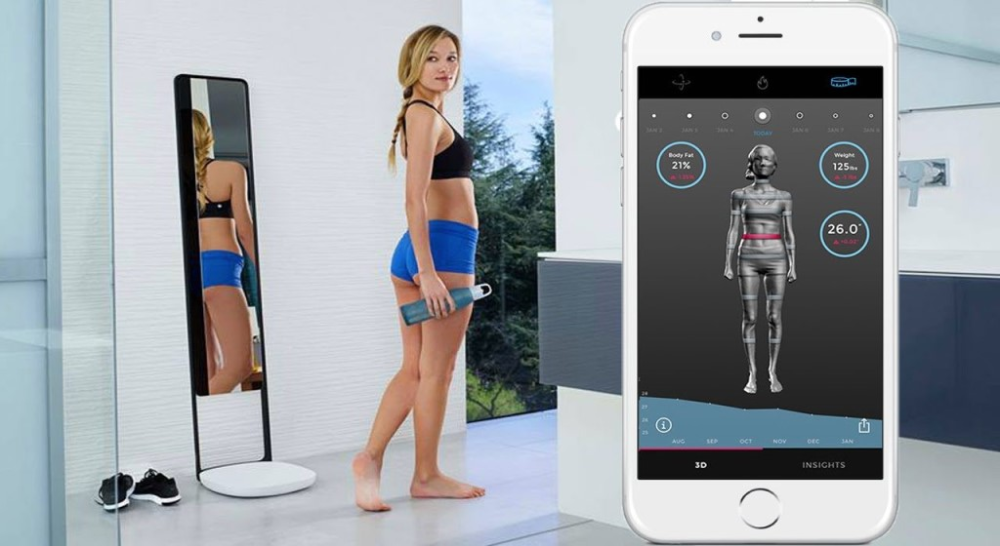 A new software version can often transform a 3D scanner into a whole new product, drastically increasing speed and usability. Expert companies are constantly developing and improving both their hardware and software to ensure the very best workflow.
A new software version can often transform a 3D scanner into a whole new product, drastically increasing speed and usability. Expert companies are constantly developing and improving both their hardware and software to ensure the very best workflow.
8. Maintenance
Don’t forget about the maintenance your 3D device will require. Just like with any other piece of advanced equipment, you might occasionally need to have your device «checked-up». This guarantees that your device will function properly and deliver accurate results for a long time to come.
Each manufacturer has their own set of maintenance procedures, such as calibration, optics cleaning and so on. Though this is something that might cost you extra, some companies offer up to two years free warranty on their products.
9. Environment
The scanning environment is yet another factor to consider when making your choice.
- What will be the standard conditions you scan in?
- Will you be scanning outdoors in direct sunlight? Or perhaps it will be in a dark and humid place?
Factors such as temperature, humidity and light can greatly affect both the overall performance of the scanner and the quality of the scans themselves.
Combine various 3D scanning technologies for best results
Manufacturers will usually indicate the optimal temperature range, as well as the accepted levels of humidity for their 3D scanning solutions, but there are a few universal rules to ensuring your 3D scanner works properly and delivers accurate results.
- Scanners might overheat when exposed to extremely high temperatures. Similarly, avoid using your device in low temperatures, as a very cold environment also affects the scanner’s accuracy and may cause it to malfunction.
- As with any other electronic equipment, 3D scanners should not be exposed to high humidity or have any contact with liquids
- Keep your device away from dirt, dust and other small particles that may cause damage
- Ensure you have enough light to capture your object
- Only very few 3D scanners can capture in direct sunlight. Most will need you to create shade where possible for better results.
10.
 Price
PricePrice is an important factor to take into consideration when making the decision to buy. The cost of the 3D scanner will correspond to the features provided by the device, as well as the quality and speed of data capture.
Key point
Though less expensive 3D scanners might seem more appealing in the short term, remember that it is an investment and look at the bigger picture.
3D scanners start at around $3,000, with the most advanced models costing over a $100,000. Though less expensive 3D scanners might seem more appealing in the short term, remember that it is an investment and look at the bigger picture. Quality devices are guaranteed to last longer, are less likely to malfunction and will deliver outstanding results for years to come.
However, keep in mind that in some cases, additional expenses may occur when purchasing a 3D scanner. Some companies may charge you extra for the following products and services:
- shipping charges
- installation
- technical support
- sales tax
- training
- standard and extended warranty
Be sure that you enquire about any additional charges prior to making a purchase.
Now that you are familiar with the main criteria for choosing the optimal 3D scanner for your projects, you can now move to the demo stage. Always test the scanners and the software beforehand to avoid any unpleasant surprises. Companies offering quality solutions are always happy to offer a one-on-one demonstration, as well as training, workshops, etc. Talk to the experts today to find out more about 3D scanning technologies and how they can have a long-lasting impact on your business.
How to choose a 3D scanner?
1. What objects do you plan to scan?
The most important question to answer first. Some scanner models are better suited for scanning people, while demonstrating a very mediocre result when working with fine details on static objects. Others are able to digitize objects from 1 centimeter to several meters extremely accurately and with high detail, but you will definitely remain unhappy with the result of their work when scanning people.
There are also objects where you will be limited in your choice of scanning technologies: really large objects, such as buildings, can often only be scanned by 3D laser scanners.
2. What size objects do you plan to scan?
Most 3D scanners are designed to work with objects of a certain size or have a fixed field of view. As a rule, manufacturers suggest using different models of scanners for working with something small, like jewelry, and something big, like cars.
If you plan to scan objects of the same size or that will not vary greatly in size, then the best choice is to find the scanner that best fits the field of view.
If you want to get the maximum coverage of object sizes from several centimeters to several meters, then you should pay attention to systems with variable scanning zones and support for working with markers. Such systems simultaneously allow achieving high detail on small objects and working with large objects due to automatic registration of scans by markers.
3. How accurate should the scanner be?
The accuracy of object data collection is one of the most important characteristics of 3D scanners. Usually, scanning accuracy is understood as the allowable deviation of each point of the obtained 3D model from the physical sample. It is measured in millimeters or microns (1 micron = 0.001 mm).
High precision 3D scanners (5-30 microns). Provide maximum quality of received data. This group includes the most accurate 3D scanning systems with minimal errors. Such accuracy is needed, for example, in the aerospace industry. The higher the accuracy, the more expensive the scanner - a scanner with 5 micron accuracy can set you back $150,000.
General purpose 3D scanners (30-100 microns). The largest group of 3D scanners that are suitable for solving a wide range of tasks in a wide variety of areas. A scanner with an accuracy of 60-70 microns (0.06-0.07 mm) will cope with most 3D scanning tasks, such systems can be found in the range of 4-6 thousand dollars.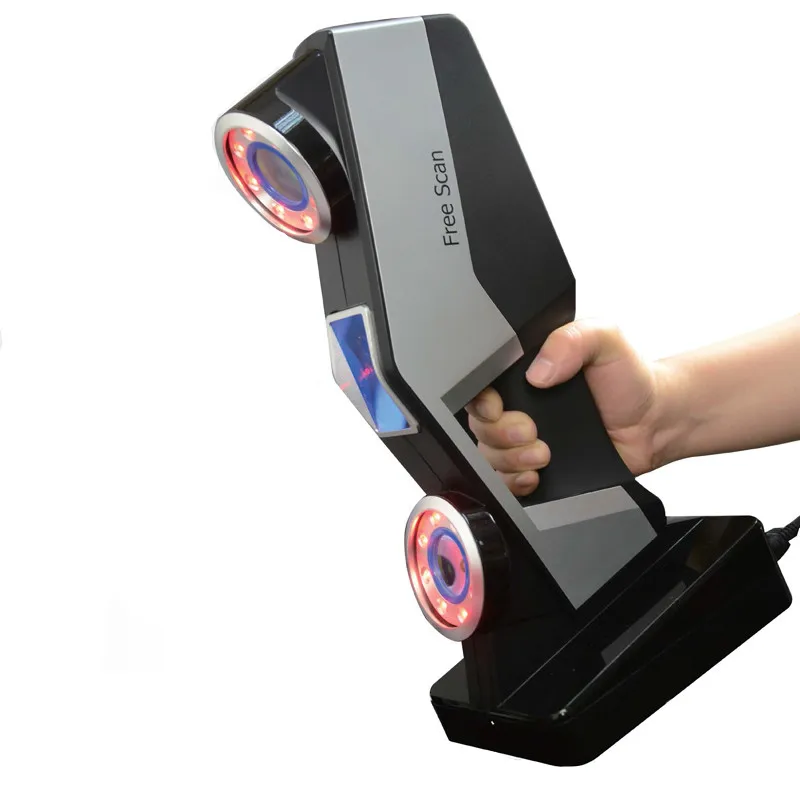
3D scanners with an accuracy of less than 100 microns. These are usually the cheapest systems on the market and do not require ultra-precise reading of object shapes. As a rule, they are used only to obtain the general geometry of an object that will not be an integral part of any mechanism or an error in measurements will not lead to negative consequences (for example, in the furniture industry when creating patterns). The worse the accuracy - the cheaper the system, prices vary from 3 thousand dollars and below.
But do not forget that for expensive systems designed for landscape and architectural scanning, such accuracy is appropriate - when digitizing rooms or building objects, a deviation of 200-300 microns is acceptable and not critical.
Find out which tolerances are the maximum for your application and select equipment specifications accordingly.
4. What resolution do you need from your scanner?
Do not confuse resolution and accuracy.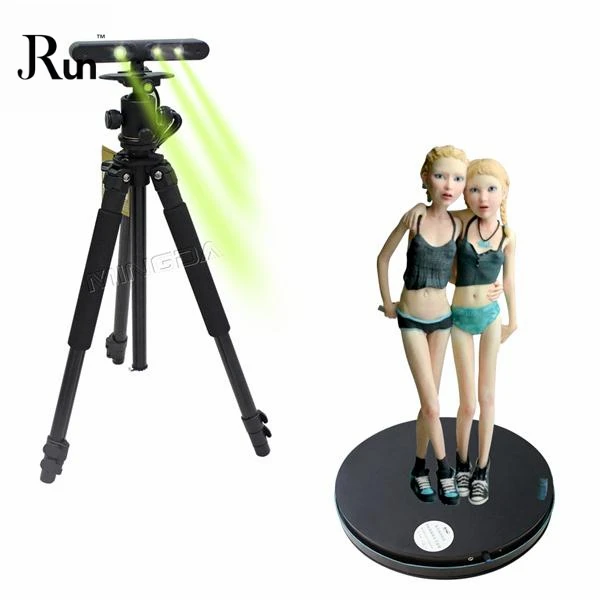 3D resolution (3D detail) refers to the degree of discreteness with which a 3D scanner can digitize an object. At the same time, it is absolutely not necessary that a scanner with high detail will have high accuracy, as well as vice versa. Each of these scanners serves a different purpose. Like accuracy, the size of the resolution affects the cost of the equipment. A high resolution 3D scanner will cost more.
3D resolution (3D detail) refers to the degree of discreteness with which a 3D scanner can digitize an object. At the same time, it is absolutely not necessary that a scanner with high detail will have high accuracy, as well as vice versa. Each of these scanners serves a different purpose. Like accuracy, the size of the resolution affects the cost of the equipment. A high resolution 3D scanner will cost more.
5. What should be the speed of the scanner?
For scanning static objects, the speed of the scanner is not so important, and if one scan takes less than 18 seconds, then most users will be fine. If the scanner is able to scan an object on a turntable 360 degrees in 2 minutes, that's more than enough.
Faster systems are required for human scanning as people cannot stay still for a long time. It is best to choose from those systems whose speed is indicated in "frames per second" and not in "seconds per frame." In any case, scanners with a speed lower than 1. 5 seconds per frame are not recommended for scanning people.
5 seconds per frame are not recommended for scanning people.
6. What is the budget for purchase and operation?
It's simple: if your budget is $6,000, don't look at $25,000 systems. However, you can manage your budget more intelligently if you pay attention to some points.
- What features and options are included in the price of the scanner? Scanners that are often approximately equal in price and technical capabilities have different configurations and a set of default functions. For some systems, this may be a turntable, for others, a texture capture module or a case for transportation. Try to find the scanner with the best equipment among competitors, so you can get more features for less money.
- How much will a license for related software cost and how much will it cost to upgrade. Pay attention to the cost of a software license per year, the cost of updates, the cost of additional licenses.
 With some manufacturers, even if you purchase an unlimited, lifetime, software license, you will be charged for updating the scanner software to the latest version. Calculate how much additional costs certain fees may entail, it may make sense to buy a more expensive model, but with free software updates and a perpetual license.
With some manufacturers, even if you purchase an unlimited, lifetime, software license, you will be charged for updating the scanner software to the latest version. Calculate how much additional costs certain fees may entail, it may make sense to buy a more expensive model, but with free software updates and a perpetual license. - Can you donate some specific features. You can save money or buy a more suitable 3D scanner if you decide not to use some functionality. For example, you can buy a desktop 3D scanner that is comparable in technical characteristics to an expensive handheld scanner for 4 times cheaper, but at the same time you have to abandon the idea of scanning people.
Prepared by Rangevision .
Range Vision Spectrum
Range Vision Spectrum You have disabled JavaScript. It scares.Partners
-
Scanner for consistently high resolution and accuracy
-
Best price for semi-professional solution
-
No analogues on the Russian market
-
Universal 3D Scanner - for miniature parts, medium and large objects
-
Our bestseller in the Russian Federation and on the world market
One scanner - a range of options
Choose and customize scanner options for your application
Sign up for a free online demo!
Get a unique opportunity to test the RangeVision Spectrum 3D scanner online before choosing.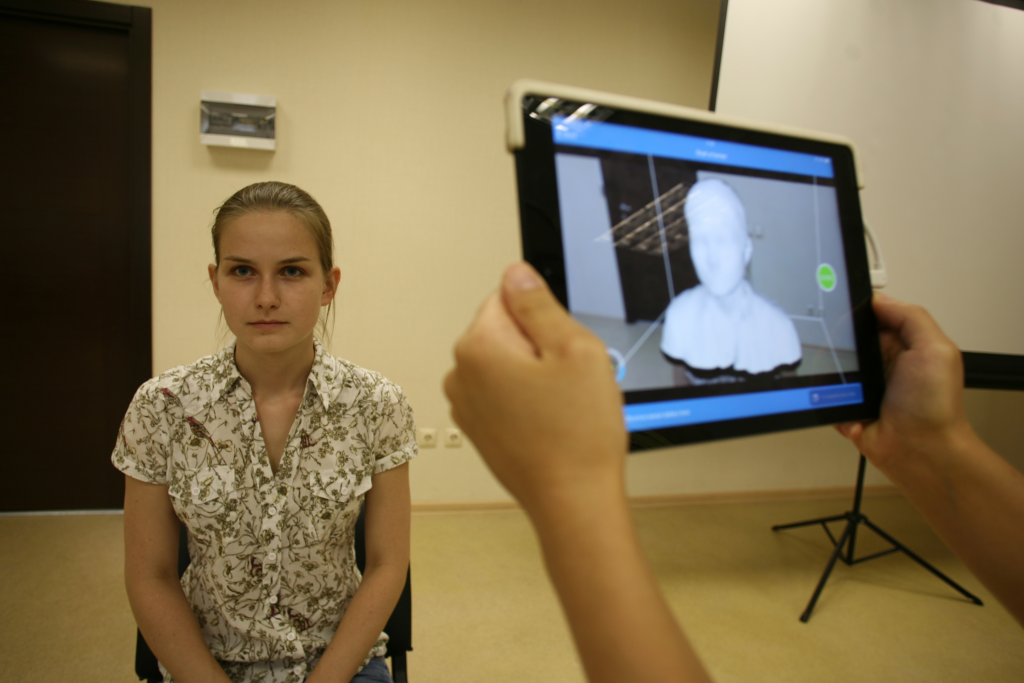 Convince yourself of its capabilities!
Convince yourself of its capabilities!
Powerful with stable scanning accuracy
Three scan modes
For convenient work with different types of objects
Select the appropriate mode for your tasks
-
Scanning on a turntable
Quickly and easily scan an object mounted on a turntable platform with the push of a button. When the object is rotated, the fragments of the model are aligned automatically.
-
Scanning with markers
Automatic alignment of model fragments by markers applied to the surface of the object. Used to improve scanning accuracy. External photogrammetry systems are supported.
-
Basic Scan
Used to scan objects that cannot be digitized in other ways, such as museum exhibits.
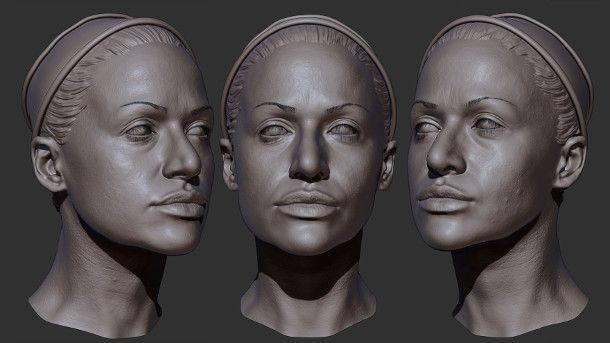 The fragments of the model obtained from different angles are combined according to the features of the object surface geometry.
The fragments of the model obtained from different angles are combined according to the features of the object surface geometry.
Scanning objects from 1 cm to 3 m
- Small size
- The average size
- Big size
Applications
Recommended for educational programs and institutions
Order Spectrum Educational
Spectrum scanner that is easy to use
10 questions before buying a 3D scanner
3D model examples
-
Automotive manifold View on site
-
lighter View on site
-
Dragon View on site
-
Lion figurine View on site
-
Pedal View on site
-
Deer sculpture View on site
-
Skull ring View on site
-
Tiled View on site
-
Badge View on site
-
Inkwell View on site
-
Bas-relief View on site
-
Bust View on site
-
Helmet View on site
-
Turtle figurine View on site
-
Wooden baluster View on site
-
Collectible figurine View on site
-
Glue gun body View on site
Specifications
| Scan technology | structured illumination | ||
| Projector Resolution | 1280 x 800 | ||
| Scan area, mm | 540x400x400 | 320x220x220 | 135x100x100 |
| Working distance, m | 0. | 0.56 | 0.26 |
| Error, µm | 120 | 60 | 40 |
| 3D resolution, mm | 0.25 | 0.15 | 0.06 |
| Ability to capture texture | there is | ||
| Camera resolution | 3.1 MP | ||
| Model stitching | by markers, by geometry | ||
| Received formats | OBJ, PLY, STL, PTX, ASCII | ||
| Scanner Power | 100-230V | ||
| Minimum PC requirements | Intel Core i5 6500 or better, 8 GB RAM | ||
| Connection interface | HDMI, 2 x USB 2. USB 2.0 for desk | ||
| Supported OS | Windows 8.1/10/11 64bit | ||
| Rotary table | there is | ||
| Table platform diameter | 20 cm | ||
| Maximum table load | 20 kg | ||
| Table food | 220V - 12V/1A | ||
| Dimensions of the scanner in the case | 530x430x200 | ||
| Scanner weight | 1.65 kg | ||
| Weight of the scanner in the case | 8.5 kg | ||
| Certificates | EAC, CE | ||
| Guarantee | 1 year | ||
Note: Product appearance may differ from website photos.
We are trusted
User Reviews
David Wohanka
EngineerAfter reviewing the various offerings on the market for reverse engineering and prototyping, we chose Spectrum. We really liked the ability to work with markers and changeable scan zones. We can use Spectrum to scan various objects, including those with complex geometry. Perhaps we can agree that the Spectrum is three scanners in one.
Lukasz Mlynar
Project Manager We specialize in creating visualizations. The Spectrum was perfect for these purposes: the resolution, the accuracy, the ability to scan in color - all perfectly matched our needs. And the equipment made it possible to use it both in the office and on field work (we often cooperate with museums and it is much easier to scan on their territory than to transport exhibits to our office). We really liked that the scanner comes with everything you need to work in different modes - it saved our budget a lot.


 96
96  0
0 



